Details
Kees van Dongen (1877-1968)
Cannes, la Croisette
signé 'Van Dongen.' (en bas à gauche); signé et inscrit 'van Dongen. Cannes' (sur le châssis); daté et inscrit indistinctement 'Cannes La Croisette' (au revers)
huile sur toile
55 x 46 cm.
Peint à Cannes vers 1922-23
signed 'Van Dongen.' (lower left); signed and inscribed 'van Dongen. Cannes' (on the stretcher); dated and indistinctly inscribed 'Cannes La Croisette' (on the reverse)
oil on canvas
21 5/8 x 18 1/8 in.
Painted in Cannes circa 1922-23
Provenance
Max Moos, Genève (avant 1967).
Collection particulière, Suisse (par descendance); vente, Christie, Manson & Woods Ltd., Londres, 1er décembre 1980, lot 36.
Galleria Marescalchi, Bologne.
Collection particulière, Bologne (acquis auprès de celle-ci vers 1995).
Acquis auprès de celle-ci par le propriétaire actuel.
Exhibited
(probablement) Paris, Atelier de l'artiste, 5, rue Juliette-Lamber, Winter at Cannes, avril 1923, no. 16.
(probablement) Paris, Atelier de l'artiste, 5, rue Juliette-Lamber, 30 ans de peinture, Exposition Van Dongen, mai 1931, no. 35.
(probablement) Paris, Petit Palais, Les Maîtres de l'Art indépendant, 1895-1937, juin-octobre 1937, no. 8.
(probablement) Londres, Rosenberg & Helft Ltd., Exhibition of Works by Van Dongen, octobre-novembre 1938, no. 5 (titré 'Femme au bord de la mer : Cannes').
(probablement) Paris, Galerie Charpentier, Beautés de la Provence, 1947, no. 150 ou 151.
Paris, Galerie Charpentier, Van Dongen, Œuvres de 1890 à 1948, 1949, no. 137 (daté '1926').
Nice, Galerie des Ponchettes, Van Dongen, 1959, p. 31, no. 42.
Genève, Musée Rath, Exposition van Dongen, octobre-novembre 1959, p. 15, no. 66.
Paris, Musée national d'art moderne et Rotterdam, Museum Boymans-van Beuningen, Van Dongen, octobre 1967-janvier 1968, no. 117 (illustré).
Special Notice
Artist's Resale Right ("droit de Suite").
If the Artist's Resale Right Regulations 2006 apply to this lot, the buyer also agrees to pay us an amount equal to the resale royalty provided for in those Regulations, and we undertake to the buyer to pay such amount to the artist's collection agent.
ƒ: In addition to the regular Buyer’s premium, a commission of 5.5%
inclusive of VAT of the hammer price will be charged to the buyer.
It will be refunded to the Buyer upon proof of export of the lot
outside the European Union within the legal time limit.
(Please refer to section VAT refunds)
Post Lot Text
« À partir de 1920, Van Dongen avait pris l’habitude de se rendre régulièrement à Cannes […] où très vite, son arrivée marquera le début de la saison. »
J. Melas Kyriazi, Van Dongen Après le Fauvisme, Lausanne, 1987, p. 46.
“As early as 1920, Van Dongen was in the habit of paying regular visits to Cannes […] where very soon his arrival was taken as a sign that the season had begun.”
J. Melas Kyriazi, Van Dongen Après le Fauvisme, Lausanne, 1987, p. 46.
En 1922, Kees van Dongen se retire à Cannes pour marquer une nouvelle ère dans sa peinture après les récents scandales qui l’ont placés au centre de la scène artistique française. Son portrait d’Anatole France et le refus de l'un de ses tableaux au Salon d’Automne de 1921 ont effectivement défrayé la chronique. Cannes, la Croisette s'inscrit dans cette période marquée par le calme retrouvé de l’artiste et témoigne en outre des enjeux qui l’animent.
Si la palette de bleus choisie par l'artiste n'est pas sans rappeler celle des nordiques et leur façon de suggérer la mélancolie, les vives teintes d'un vert et d'un rouge prononcé dans le visage et l'absence de démarcation entre les différents aplats de couleurs forment quant à eux un écho avec les fauves.
Suite à la rencontre de l'artiste avec la directrice de mode Léa (Jasmy) Jacob en 1921, un nouveau monde de luxe et de faste s’ouvre à van Dongen: il s’installe à Cannes pour continuer de réaliser des portraits de commande, et ainsi devenir le peintre le plus prisé des années 1920.
Ce goût pour les artifices que l'artiste gardera toute sa vie est manifeste dans cette œuvre où le modèle du premier plan incarne toute l’élégance et la modernité de son temps. Alors considéré comme le « van Dyck des nouveaux riches » (L. Gillet, « Le Salon d’automne », in Gazette des Beaux-Arts, Paris, 1921, vol. 2, p. 303-316.), van Dongen se plaît en effet à représenter la femme en majesté par une silhouette longiligne, une coupe à la garçonne, un maquillage proéminent, et une parure soignée.
Représentée seule face à la mer, l'élégante n'est pas sans évoquer le caractère méditatif et introspectif que suggère le geste créateur.
In 1922, Kees van Dongen withdrew to Cannes to mark a new era in his painting after a recent series of scandals that had brought him to prominence on the French art scene. His portrait of Anatole France and the rejection of one of his paintings by the Salon d’Automne in 1921 had made him the talk of the town. Cannes, la Croisette falls within this period characterised by the artist's newly found sense of calm and also bears witness to the issues driving him.
While the palette of blues chosen by the artist is not dissimilar to Nordic painters and their way of suggesting melancholy, the bright shades of a green and a pronounced red in the face, along with the lack of demarcation between the different solid areas of colour echo the Fauves.
Van Dongen's meeting with fashion director Léa (Jasmy) Jacob in 1921 opened up a new world of luxury and splendour to the artist: he moved to Cannes where he continued to receive portrait commissions, thereby making him the most sought-after painter of the 1920s.
The taste for artifice that the artist would keep throughout his life can be seen in this work, in which the model in the foreground embodies all the elegance and modernity of her time. Seen at the time as the “van Dyck of the nouveau riche” (L. Gillet, 'Le Salon d’automne', in Gazette des Beaux-Arts, Paris, 1921, vol. 2, p. 303-316.), van Dongen enjoyed majestically depicting the woman with a slender silhouette, flapper hairstyle, striking make-up and immaculate finery.
Portrayed alone facing the sea, the elegant lady evokes something of the meditative and introspective nature suggested by the creative act.
Details
Kees van Dongen (1877-1968)
Cannes, la Croisette
signé 'Van Dongen.' (en bas à gauche); signé et inscrit 'van Dongen. Cannes' (sur le châssis); daté et inscrit indistinctement 'Cannes La Croisette' (au revers)
huile sur toile
55 x 46 cm.
Peint à Cannes vers 1922-23
signed 'Van Dongen.' (lower left); signed and inscribed 'van Dongen. Cannes' (on the stretcher); dated and indistinctly inscribed 'Cannes La Croisette' (on the reverse)
oil on canvas
21 5/8 x 18 1/8 in.
Painted in Cannes circa 1922-23
Provenance
Max Moos, Genève (avant 1967).
Collection particulière, Suisse (par descendance); vente, Christie, Manson & Woods Ltd., Londres, 1er décembre 1980, lot 36.
Galleria Marescalchi, Bologne.
Collection particulière, Bologne (acquis auprès de celle-ci vers 1995).
Acquis auprès de celle-ci par le propriétaire actuel.
Exhibited
(probablement) Paris, Atelier de l'artiste, 5, rue Juliette-Lamber, Winter at Cannes, avril 1923, no. 16.
(probablement) Paris, Atelier de l'artiste, 5, rue Juliette-Lamber, 30 ans de peinture, Exposition Van Dongen, mai 1931, no. 35.
(probablement) Paris, Petit Palais, Les Maîtres de l'Art indépendant, 1895-1937, juin-octobre 1937, no. 8.
(probablement) Londres, Rosenberg & Helft Ltd., Exhibition of Works by Van Dongen, octobre-novembre 1938, no. 5 (titré 'Femme au bord de la mer : Cannes').
(probablement) Paris, Galerie Charpentier, Beautés de la Provence, 1947, no. 150 ou 151.
Paris, Galerie Charpentier, Van Dongen, Œuvres de 1890 à 1948, 1949, no. 137 (daté '1926').
Nice, Galerie des Ponchettes, Van Dongen, 1959, p. 31, no. 42.
Genève, Musée Rath, Exposition van Dongen, octobre-novembre 1959, p. 15, no. 66.
Paris, Musée national d'art moderne et Rotterdam, Museum Boymans-van Beuningen, Van Dongen, octobre 1967-janvier 1968, no. 117 (illustré).
Special Notice
Artist's Resale Right ("droit de Suite").
If the Artist's Resale Right Regulations 2006 apply to this lot, the buyer also agrees to pay us an amount equal to the resale royalty provided for in those Regulations, and we undertake to the buyer to pay such amount to the artist's collection agent.
ƒ: In addition to the regular Buyer’s premium, a commission of 5.5%
inclusive of VAT of the hammer price will be charged to the buyer.
It will be refunded to the Buyer upon proof of export of the lot
outside the European Union within the legal time limit.
(Please refer to section VAT refunds)
Post Lot Text
« À partir de 1920, Van Dongen avait pris l’habitude de se rendre régulièrement à Cannes […] où très vite, son arrivée marquera le début de la saison. »
J. Melas Kyriazi, Van Dongen Après le Fauvisme, Lausanne, 1987, p. 46.
“As early as 1920, Van Dongen was in the habit of paying regular visits to Cannes […] where very soon his arrival was taken as a sign that the season had begun.”
J. Melas Kyriazi, Van Dongen Après le Fauvisme, Lausanne, 1987, p. 46.
En 1922, Kees van Dongen se retire à Cannes pour marquer une nouvelle ère dans sa peinture après les récents scandales qui l’ont placés au centre de la scène artistique française. Son portrait d’Anatole France et le refus de l'un de ses tableaux au Salon d’Automne de 1921 ont effectivement défrayé la chronique. Cannes, la Croisette s'inscrit dans cette période marquée par le calme retrouvé de l’artiste et témoigne en outre des enjeux qui l’animent.
Si la palette de bleus choisie par l'artiste n'est pas sans rappeler celle des nordiques et leur façon de suggérer la mélancolie, les vives teintes d'un vert et d'un rouge prononcé dans le visage et l'absence de démarcation entre les différents aplats de couleurs forment quant à eux un écho avec les fauves.
Suite à la rencontre de l'artiste avec la directrice de mode Léa (Jasmy) Jacob en 1921, un nouveau monde de luxe et de faste s’ouvre à van Dongen: il s’installe à Cannes pour continuer de réaliser des portraits de commande, et ainsi devenir le peintre le plus prisé des années 1920.
Ce goût pour les artifices que l'artiste gardera toute sa vie est manifeste dans cette œuvre où le modèle du premier plan incarne toute l’élégance et la modernité de son temps. Alors considéré comme le « van Dyck des nouveaux riches » (L. Gillet, « Le Salon d’automne », in Gazette des Beaux-Arts, Paris, 1921, vol. 2, p. 303-316.), van Dongen se plaît en effet à représenter la femme en majesté par une silhouette longiligne, une coupe à la garçonne, un maquillage proéminent, et une parure soignée.
Représentée seule face à la mer, l'élégante n'est pas sans évoquer le caractère méditatif et introspectif que suggère le geste créateur.
In 1922, Kees van Dongen withdrew to Cannes to mark a new era in his painting after a recent series of scandals that had brought him to prominence on the French art scene. His portrait of Anatole France and the rejection of one of his paintings by the Salon d’Automne in 1921 had made him the talk of the town. Cannes, la Croisette falls within this period characterised by the artist's newly found sense of calm and also bears witness to the issues driving him.
While the palette of blues chosen by the artist is not dissimilar to Nordic painters and their way of suggesting melancholy, the bright shades of a green and a pronounced red in the face, along with the lack of demarcation between the different solid areas of colour echo the Fauves.
Van Dongen's meeting with fashion director Léa (Jasmy) Jacob in 1921 opened up a new world of luxury and splendour to the artist: he moved to Cannes where he continued to receive portrait commissions, thereby making him the most sought-after painter of the 1920s.
The taste for artifice that the artist would keep throughout his life can be seen in this work, in which the model in the foreground embodies all the elegance and modernity of her time. Seen at the time as the “van Dyck of the nouveau riche” (L. Gillet, 'Le Salon d’automne', in Gazette des Beaux-Arts, Paris, 1921, vol. 2, p. 303-316.), van Dongen enjoyed majestically depicting the woman with a slender silhouette, flapper hairstyle, striking make-up and immaculate finery.
Portrayed alone facing the sea, the elegant lady evokes something of the meditative and introspective nature suggested by the creative act.
.jpg)
.jpg)
.jpg)

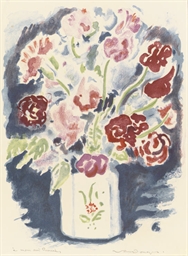

.jpg)
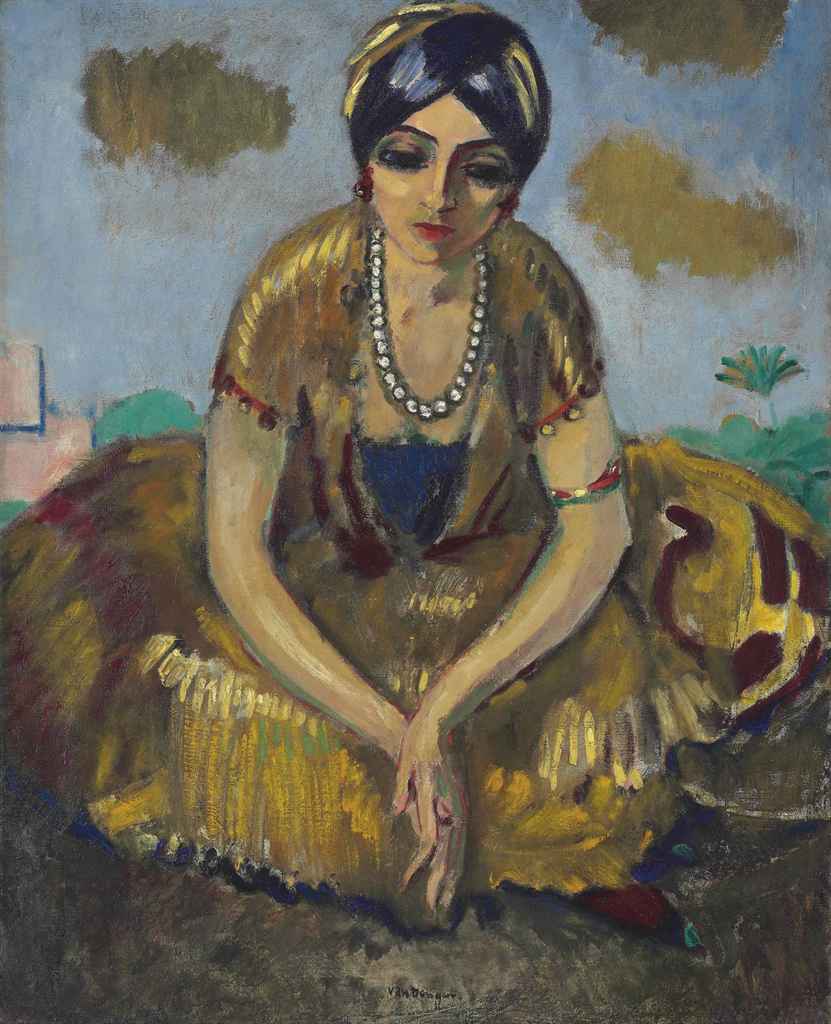
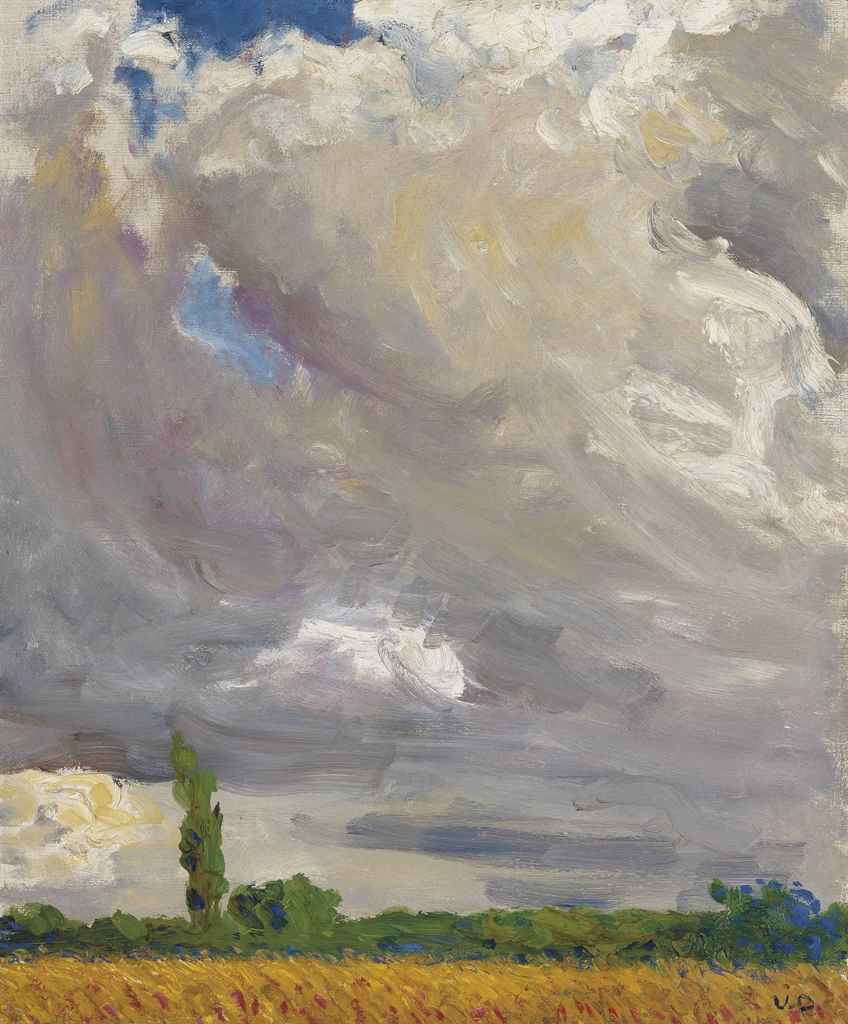

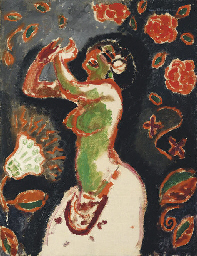
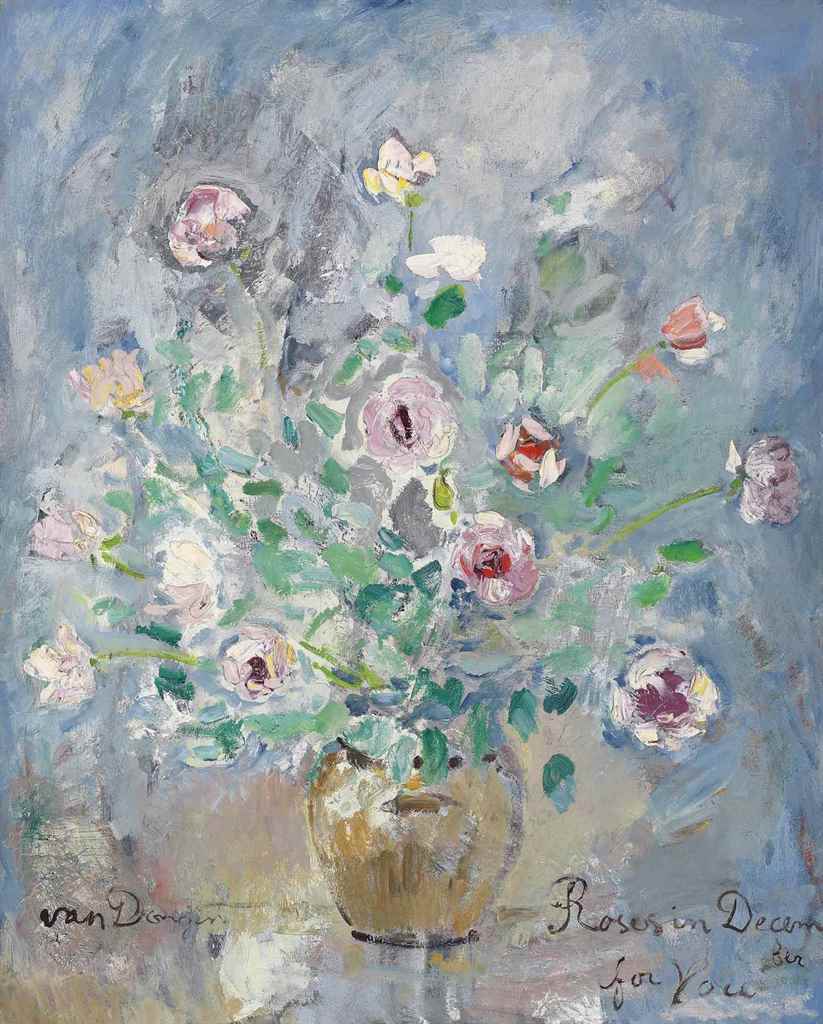
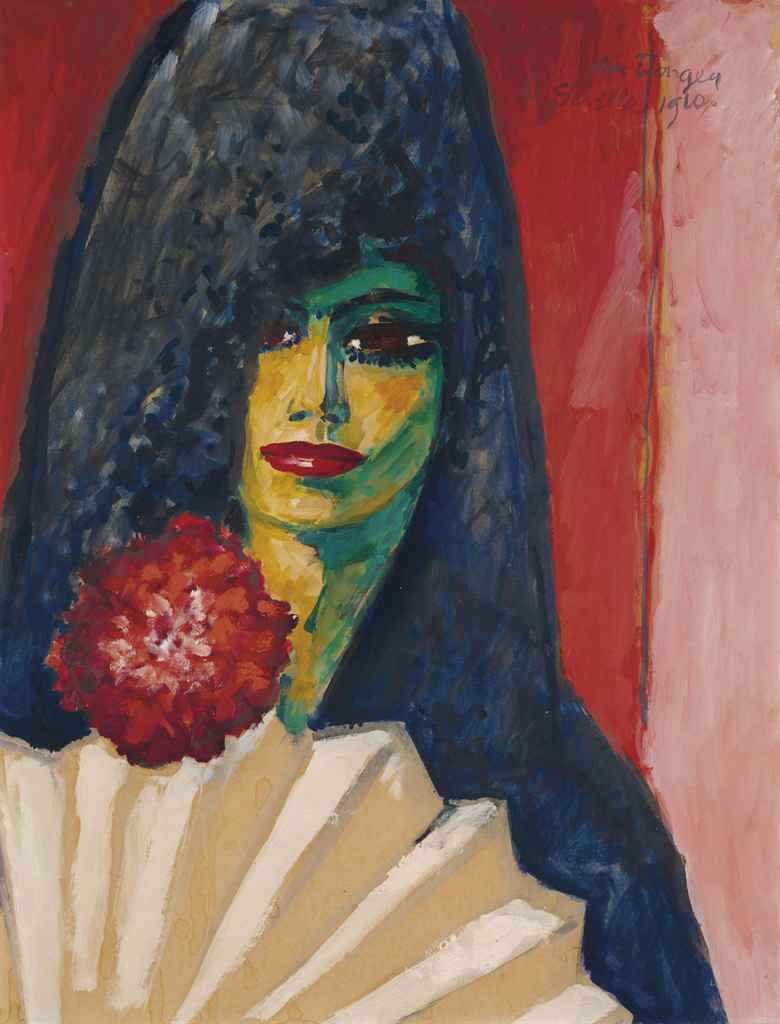

.jpg)
Testen Sie LotSearch und seine Premium-Features 7 Tage - ohne Kosten!
Lassen Sie sich automatisch über neue Objekte in kommenden Auktionen benachrichtigen.
Suchauftrag anlegen